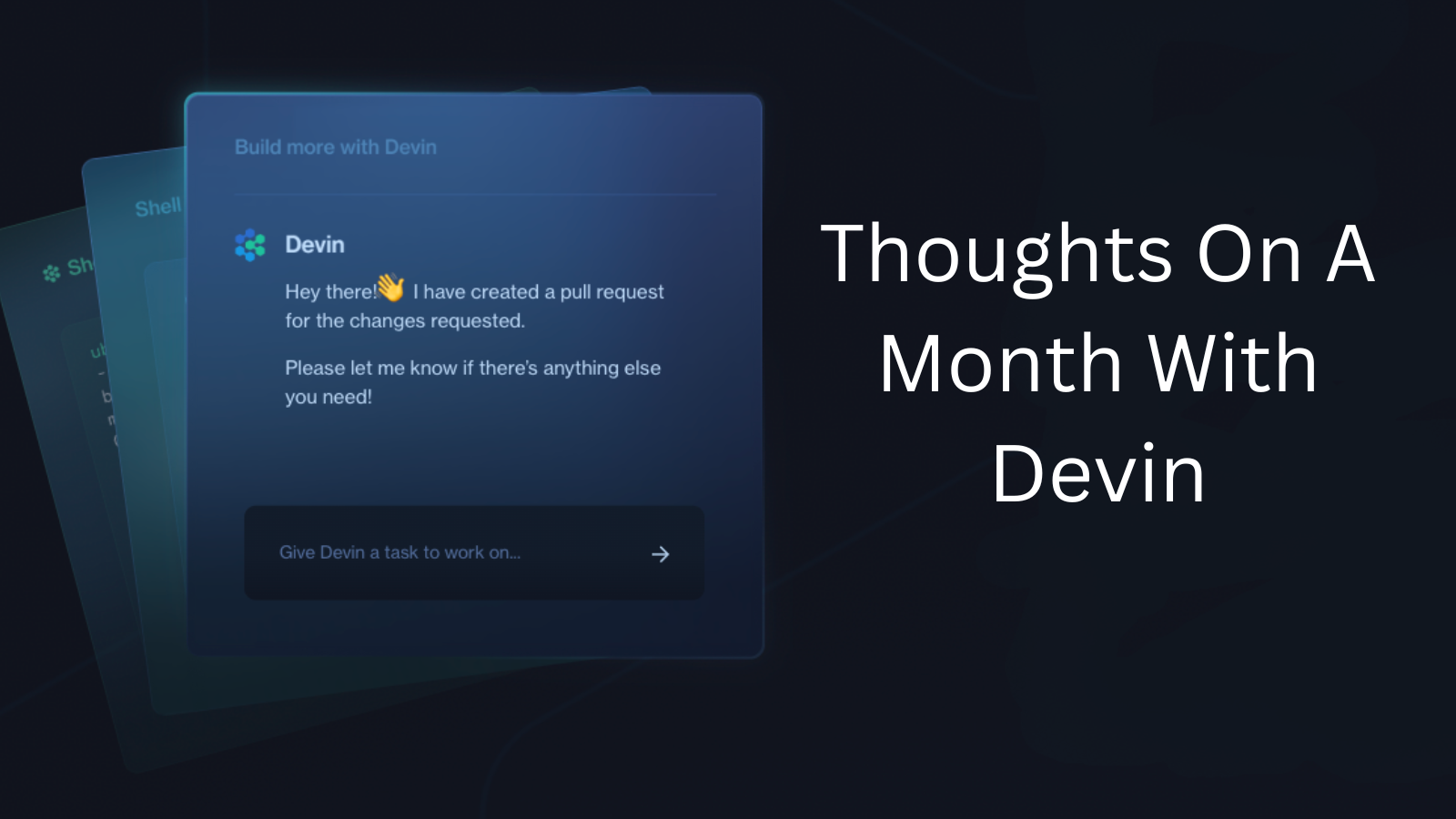Your AI Coding Assistant Is Gaslighting You (The Hidden Cost of Uncertainty in AI Coding Assistants)


The recent Devin review by Answer.AI highlights a critical but often overlooked aspect of AI coding assistants: their maddening unpredictability. While much attention has focused on raw capabilities, the real challenge for professional developers isn't just what these tools can do, but knowing when to use them.
The Slot Machine Problem
Every interaction with an AI coding assistant is, in essence, a gamble. Will this query save you 30 minutes or cost you 3 hours? The boundaries of capability aren't just fuzzy – they're actively misleading. A tool might brilliantly handle a complex API integration one day, then completely fumble basic string manipulation the next. This variance creates a cognitive tax that experienced developers must constantly pay.
The most insidious part isn't the failures themselves – it's the uncertainty tax on your decision-making process. Should you attempt to use AI assistance for this particular function? There's no clear heuristic. The complexity of the task isn't a reliable predictor. The similarity to previous successful interactions isn't either. Each decision to engage with an AI assistant requires a mental coin flip, with stakes that aren't clear until you're already invested.
Disrupting the Flow of Mastery
Professional software development relies heavily on deterministic knowledge and predictable tools. When a senior developer writes a line of code, they're not just solving the immediate problem – they're updating their mental model of the entire system. They know exactly what will happen when they make a change, which allows them to reason about complex interactions and side effects.
AI assistants disrupt this flow by introducing stochastic elements into what should be a deterministic process. It's like giving a master chef a knife that sometimes cuts perfectly and other times turns ingredients to mush, with no clear pattern to predict which outcome you'll get. Or handing a professional photographer a camera where the focal length randomly changes between shots. This uncertainty doesn't just slow down the immediate task – it actively interferes with the accumulation of expertise.
The Misalignment of Boundaries
The marketing of AI coding assistants often frames them as "AI software engineers" or "pair programmers," but this anthropomorphization is actively harmful. Human developers have clear patterns of expertise – they might be strong in frontend development but weak in database optimization, or expert in Python but novice in Rust. These boundaries are clear, consistent, and map to recognizable domains of knowledge.
AI assistants, in contrast, have capability boundaries that don't align with any traditional software engineering categories. They might excel at writing regex patterns but struggle with basic for loops. They could masterfully handle complex TypeScript type definitions but fail to properly close a file handle. These boundaries don't just cross traditional domain expertise – they seem to defy any rational categorization.
Raw Prompting: The Surprising Winner
Despite the impressive demos of autonomous coding agents, many developers are finding that simple, focused prompting of base language models remains the most reliable approach. The key difference is control and predictability. When you prompt GPT-4 to generate a specific function, you're operating within clear constraints. The scope is limited, the context is controlled, and most importantly, you remain firmly in the driver's seat.
This preference for raw prompting over autonomous agents isn't a failure of technology – it's a recognition that predictability and control are features, not bugs. The ability to precisely scope and constrain the AI's involvement allows developers to maintain their mental models and workflow while still leveraging AI capabilities.
Moving Forward: Redefining AI Coding Assistance
To make AI coding assistants truly useful for professional developers, we need to move away from the "AI as colleague" model and toward something that better reflects the true nature of these tools. Some potential directions:
- Capability Clustering: Instead of promising broad software engineering abilities, tools could focus on specific, well-defined tasks where they consistently excel.
- Confidence Signaling: AI assistants could provide clear, reliable indicators of their confidence in handling specific types of tasks, allowing developers to make informed decisions about when to use them.
- Bounded Autonomy: Rather than attempting full autonomy, tools could operate within explicitly defined constraints, reducing the uncertainty space developers must navigate.
- Pattern Recognition: The community could work to identify and document the actual patterns of AI capability and failure, rather than trying to force them into traditional software engineering categories.
The future of AI coding assistance likely lies not in creating perfect autonomous agents, but in developing tools that complement human developers' strengths while being honest about their limitations. The goal should be to reduce the cognitive overhead of deciding when to use AI assistance, allowing developers to focus on what they do best: building reliable, maintainable software systems.
Until we can better define and predict the capabilities of AI coding assistants, they will remain powerful but unreliable tools – useful in specific circumstances but requiring careful consideration before deployment. The challenge isn't just making these tools more capable, but making them more predictably capable.
